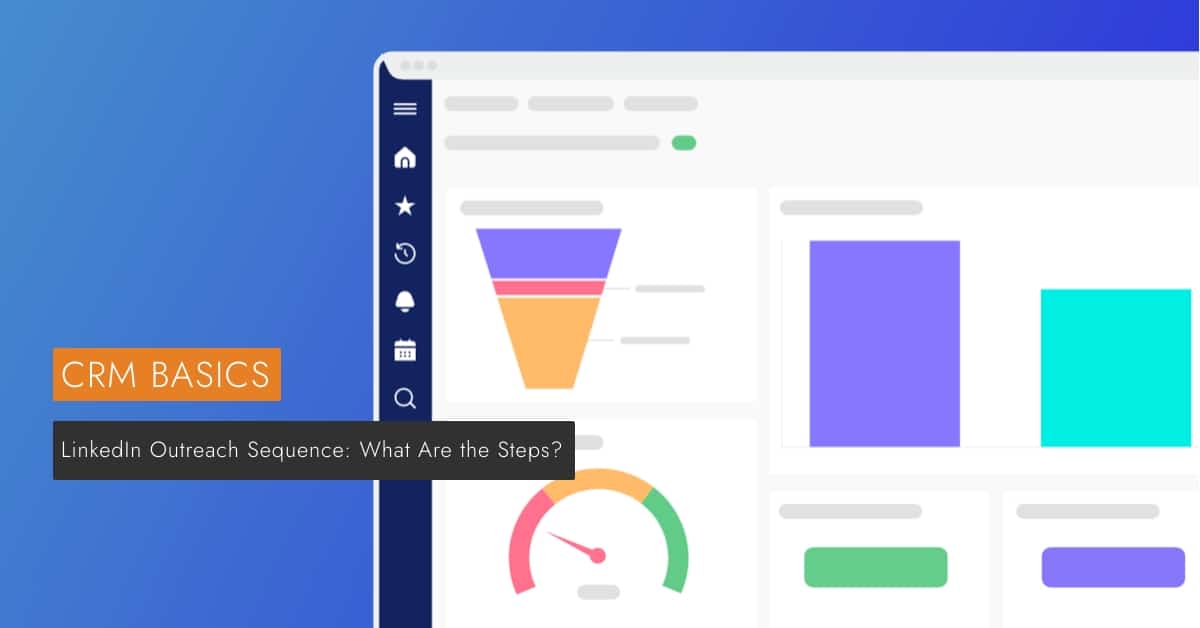LinkedIn Outreach Sequence: What Are the Steps?

Many people are apprehensive when they first think about getting involved in LinkedIn outreach. They think that it’s too complicated, too time-consuming, or they don’t know where to start.
Thankfully, you can use a LinkedIn outreach sequence to maximise your efforts and make sure you’ve covered all the bases.
If you’re looking for a way to connect with your target audience and drive business, LinkedIn outreach is your best shot. Read on to learn the steps of the LinkedIn outreach sequence.
4 Major Steps of the LinkedIn Outreach Sequence
1. Find Prospects
First, you need to find prospects. There are quite a few ways to find LinkedIn users who could potentially become leads. You can start by looking at alumni lists or take a peak at your competitor’s network. You may also find worthy prospects on the “People also viewed” sidebar.
If you’re looking for prospects from a specific industry or niche, you can browse by skill endorsements as well.
There’s more than one way to find prospects on LinkedIn, but the point is to keep networking.
2. Add Value to Your Profile
The next step is to add value to your profile. You want to show your prospective clients that you are an expert in your particular niche, and that you can solve their various problems.
How do you add value to your profile? By creating content that builds awareness and speaks to your audience’s pain points. The more helpful your content is, the more valuable it will seem.
When you are active on LinkedIn, your chances of getting in front of the right people is much higher than if you were not involved with the community.
People like seeing that you are engaged, and they’ll appreciate you offering value without asking for anything in return.
Post great-quality content often to boost your profile.
3. Analyze Competitors and Find Out Contacts
Once you’re done with adding value to your profile, it’s time to analyze your competitors.
To start, simply type in your business’ keywords into the LinkedIn search bar.
If someone has received a lot of recommendations or shares their content often, you should see them appear on the first page. You can also use tools such as Followerwonk to find out who is following your competitors.
Those who follow your competitors should be the target of your outreach. You can then use your competitors’ profiles to find more contacts or directly reach out to prospects.
4. Email Outreach Template
The last step is to write a template for your email outreach. You should start with a simple template, and then you can personalise it according to the information you have gathered about your target prospects.
Remember that people don’t usually read emails from strangers. If you want them to open yours, then make sure that it’s personalized, not too long, and that it addresses their problems.
Why Use LinkedIn Outreach
LinkedIn Outreach Increases Your Visibility
All forms of outreach are beneficial in their way, but LinkedIn outreach is especially good at increasing visibility. After all, that’s what LinkedIn is for; bringing professionals together and helping them share ideas and information.
Connecting with People Has Never Been Easier
If you want to do business with someone but don’t have a personal connection, your next best bet is LinkedIn. You can use this tool to find people in the same network as your prospects and then contact them about their connections. That’s how easy it is.
It Increases the Number of Leads for Your Business
LinkedIn outreach helps you generate more leads, and it can also increase your conversion rate. It does this by increasing your network connections.
It’s a Free Platform
LinkedIn is free, and it doesn’t require you to buy any pricey products or services to be successful at outreach. While you can go a long way with organic outreach, we do recommend taking advantage of LinkedIn’s powerful ads for business.
It’s Convenient
LinkedIn outreach is simple to do, and requires common sense more than anything else. All you have to do is use the search bar to look for your prospects, find out who they are connected with, and then send them messages that address their problems.
Conclusion
Like any relationship, you need to be patient and understand that it takes time for people to trust you and see your value. The best way to build relationships is by offering valuable advice and helping others out when they ask for help. However, if you want to generate sales or get in front of the right people, you may want to create content relevant to your business and thought leadership.
